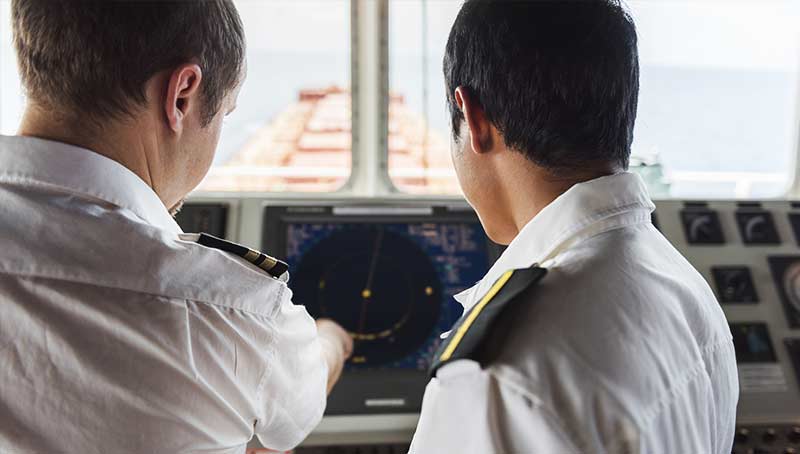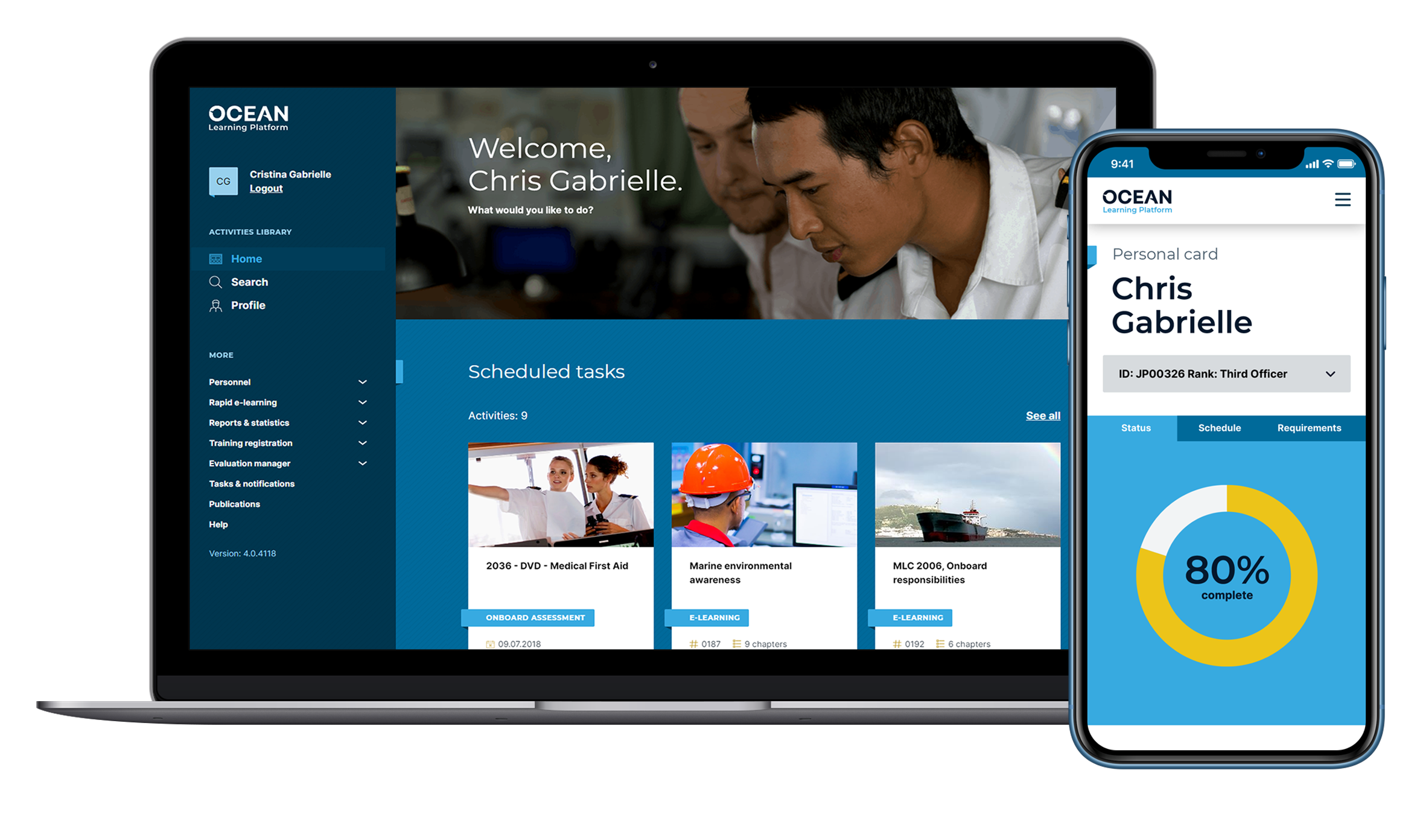A New Fire Fighting Threat
Ships are inherently dangerous places with safety challenges at every turn and it is the job of all onboard to ensure that the vessel is made and kept as safe as it can be.
Unfortunately accidents do happen and of all the things that can go wrong at sea one of the most terrifying is a shipboard fire. Sadly these are still all too common, and every year seafarers are killed, ships lost and cargoes destroyed.
Recently there has been a spate of fires with several vessels lost.
From cargoes spontaneously heating and combusting on bulk carriers to car fires on ro-ro vessels and of misreported cargoes within containers, the threat of fire is an ongoing risk that must be mitigated.
Clearly there is a need for seafarers to be able to respond quickly and effectively in the event of a fire, and to be able to bring their training and knowledge to bear on what can all too easily develop into a disastrous situation.
The Li-ion roars
An increasingly common problem is that of battery fires, particularly involving Lithium-ion (Li-ion) batteries. These may be in cargoes, pushed into containers, inside electric vehicles or used as part of the ship’s own systems. This increased use of Li-ion batteries has led to an increased risk of fire and poses very unique problems if they do ignite.
A European Union report concluded that a Li-ion battery fire onboard a ship can be particularly deadly, as a Li-ion fire is one of the most dangerous and difficult fires to control and extinguish. The report also highlighted the problem that traditional fire suppression systems are ineffective in case of a battery fire. Such systems could even worsen the situation thus increasing the already significant risk to seafarers when attempting to tackle such fires.
While Li-ion batteries have their benefits, part of the problem stems from what makes them so popular- the amount of power they provide relative to their size. When it comes to carriage on a ship there are stresses and strains which may lead to structural damage to the battery casing, potentially triggering a short-circuit.

Unparalleled breadth and quality of content
We offer the most comprehensive library of maritime blended learning content ever assembled, with the full spectrum of learning needs covered.
We take a blended approach to content, including e-learning, videos for group viewing, interactivity in assessments and exercises to test the application of knowledge.
If these batteries do short-circuit they can overheat and create a chain reaction known as “thermal runaway”. This can be caused by external heating, overcharging or damage to the battery. When a thermal runaway occurs it has a cascading effect as the batteries reach very high temperatures and emit smoke and toxic gasses that can fuel a fire or an explosion, especially if they are packed tightly with other lithium batteries.
Adding to the problem, Li-ion batteries also generate hydrogen gas. Given the low flash level of hydrogen gas, proper ventilation is paramount considering the sources of spark in vessels whether electronics or even the battery charger itself. In a worst-case scenario, the batteries risk becoming unstable, and potentially explosive. This is why container fires involving Li-ion batteries are particularly difficult to tackle.
According to a risk bulletin from Allianz, there are inherent problems with Li-ion batteries, and these must be considered. Li-ion batteries begin degrading soon after being manufactured and will typically last 2 to 3 years from the date of manufacture, whether used or not. As a result even relatively new vessels can experience problems.
Another problem, especially for batteries which may be carried in containers is that heat causes lithium-ion batteries to break down faster than normal. Storage in a cool place is recommended, usually around 15°C (59°F). This gives little room for error, and vessels loading boxes in warmer climes will have to be particularly wary of the impact of heat on any battery cargoes. This also assumes that they are correctly manifested, as all too often shippers will seek to mislabel them to avoid increased costs. This is a potentially lethal cocktail of a very dangerous cargo sitting unknown and misidentified.
How to stay safe
Dealing with such a potentially dangerous cargo means there are many special considerations. Though it can be very hard for container vessels, on which boxes can be mislabelled or dangerous cargoes can be concealed.
Documentation
Before the batteries can be transported they have passed certain tests to ensure they are not defective. A test summary is vital documentation, and shows the batteries have been subjected to pressure, temperature, crush and impact tests. There is a set or UN tests to be complied with https://unece.org/about-manual-tests-and-criteria
Regulations
Lithium batteries listed in IMDG Code 39th amendment and when transporting by sea all packages must be marked and labelled, cargo transport units must be marked and dangerous goods declaration must be handed over to the carrier. The watt-hour rating and other conditions classify which dangerous goods regulations must be taken into account. So, knowing what kind of batteries is important, the size and capacity makes a difference to the ways in which they can be handled and shipped. If the cells are less than a certain weight or charge capacity, then they are exempted. However, it seems that all too often shippers may try to mislabel or conceal the true nature, and that is a potential nightmare for vessels.
Charge
Shipping batteries at 100% full charge is a recipe for disaster. The more energy stored, the obviously the greater chance of discharge and therefore ignition. However, if batteries are shipped at 0% charge, then this stresses the battery and ultimately damages the life and performance. So that damages the cargo. There is a sweet spot at about 30% charge, and shippers should be looking to ensure cargoes are at around that level of charge.
Training
For all shipments, personnel involved in the preparation and transport of lithium ion cells or batteries must receive adequate instruction on these requirements or Dangerous Goods training. Also specialised fire fighting skills will be needed, and so training in fire fighting, and keeping skills up to date is vital. There are also the constant challenges to understanding the risks of fire on any particular vessel, and for each cargo type.
In our latest release we had included a title detailing the properties and potential hazards of lithium-ion batteries, including practices for preventing lithium-ion battery fires.
Ocean Technologies Group provides a large library of fire fighting resources, and these cover the basics, but also more advanced techniques too. Find out more at our Ocean Learning Library

The ultimate in maritime e-learning
Accessible, repeatable, measurable – a learning solution for the 21st century vessel, available wherever you are in the world.

Discover Ocean Learning
Transform your business today with the power of e-learning.
Explore our solutions
Competency Management System
Rapid E-Learning
Performance Appraisal
Pulse Survey
OLP App
The ultimate in maritime e-learning. Accessible, repeatable, measurable – a learning solution for the 21st century vessel, available wherever you are in the world.
Virtual Classroom
Cloud Simulation
Training formats explained
Pricing
Explore Ocean Learning Library
Certified Maritime Training Courses

Powered by the most recognised providers of e-learning in the maritime world.
Get peace of mind selecting teams you can entrust with the care of your people, the environment, cargo and vessels.
Assessment Solutions
Crew Evaluation System (CES)
Marlins English Language Testing
Facet5 Personality Testing
Ability Profiling APRO
Remote Proctoring AI
Our crew management solutions provide comprehensive coverage of the entire maritime HR function of today’s commercial vessel operator.
Crew Management Solutions
COMPAS
Our fleet management solutions empower operational teams with insights and workflows that drive improved vessel performance.
Fleet Management Solutions
TM Master
Resources
News
Insights
Events
About us
Who we are
Our Solutions
Why choose us?
Board of Directors
Executive Team